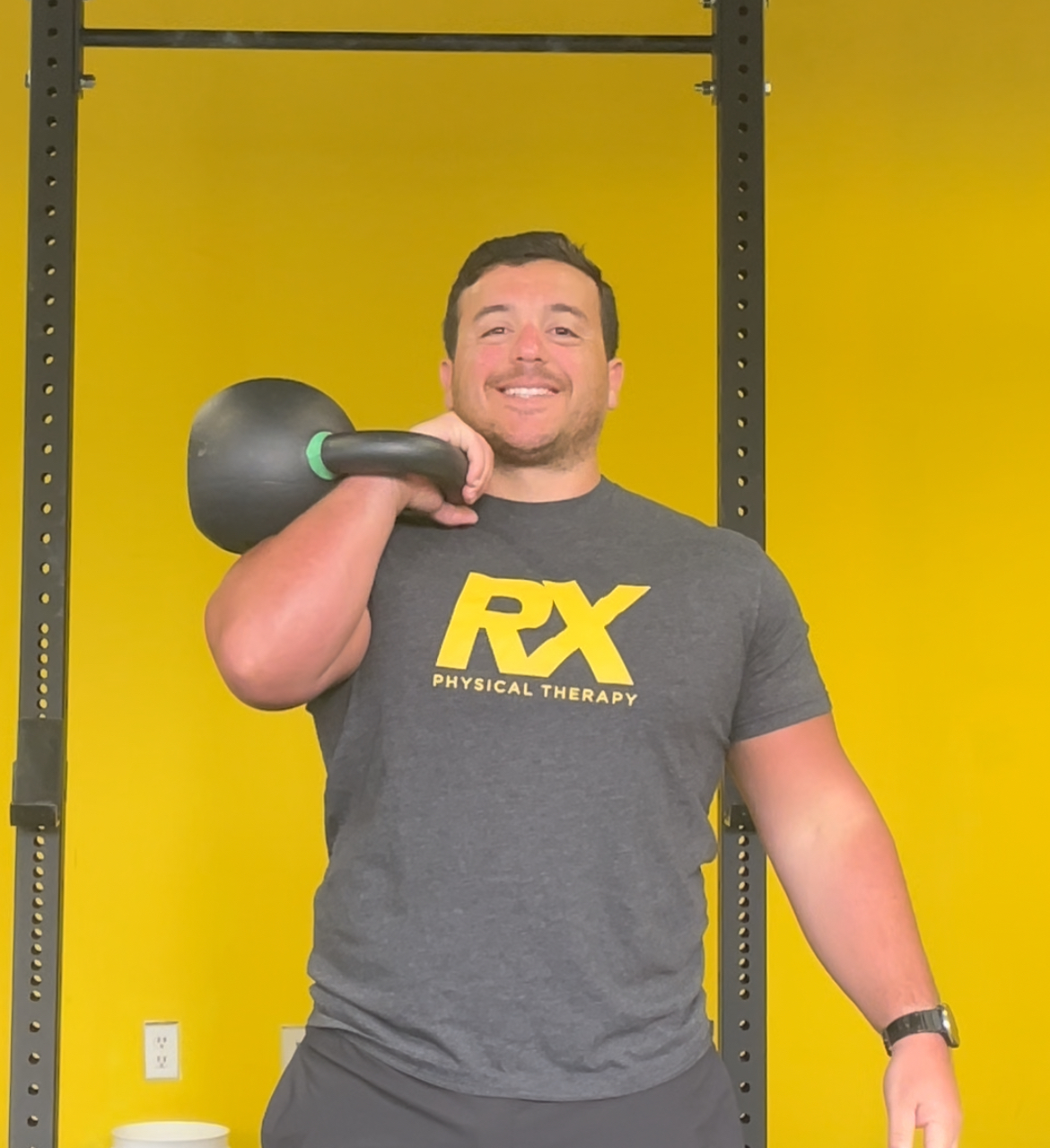Elbow Pain

Dr. Charles Ferruzza, PT, DPT, ATC, USAW,
CF-L1
Owner and Founder of RX Physical Therapy
Is Elbow Pain Making It Difficult to Lift Weights, Carry Groceries, Play Tennis/Golf/Pickleball, or Carry Out Your Regular Work or Home Duties?
Does this describe you?
- You expected the pain to go away after a few days or weeks, but it didn't?
- You tried heating pads, ice, and home TENS units, but nothing worked?
- You had a few massages, but the pain reappeared after a few days?
- You went to a doctor, who took some images and gave you an injection or told you to take some pills, but the relief was short-lived?
- You've tried physical therapy before but it didn't work?
- You've decided that if you just avoid the painful activities, you'll be fine?
We Are Here to Assist You in Finding Long-Term Solutions!
We Commonly Treat the Following Elbow Conditions:
- Medial Epicondylitis (Golfer's Elbow)
- Lateral Epicondylitis (Tennis Elbow)
- Biceps Rupture
- Joint Instability
The Most Common Causes
1. Injury is caused by the repeated use of the same muscle groups without adequate mobility work or recovery time; a sudden impact or load on the tissue.
2. Impaired Mechanics: joint stiffness or decreased muscle flexibility leads to decreased range of motion; weakness and muscle imbalance
3. Chronic compensations: a previous injury or fear of future injury can cause avoidance of activity in certain muscle groups while overuse of other tissues occurs.
RX Physical Therapy Approach
1. Breaking the cycle of pain requires education, manual therapy, and increased tissue mobility.
2. Improve the mechanics of the area’s joints, muscles, and nerves during daily functional tasks as well as exercise/sport-specific activities.
3. Load the tissue to increase strength, power, and endurance, ensuring that the tissues are ready for all desired demands without fear of re-injury.
RX Physical Therapy Approach
- Reduce tissue inflammation by bracing, taping, and massage.
- Stretching, instrument-assisted mobilization, cupping, and dry needling can all help to increase tissue mobility.
- Specific nerve exercises can help to reduce nerve sensitivity (numbness, tingling, and pain that extends down the arm).
- Plyometric and functional activities should be progressed (throwing, catching, pushing, pulling, pressing)
Important Concepts to Understand
1. Tissues mend. The body is designed to repair itself, but occasionally our system becomes stuck in the inflammatory phase of tissue repair and requires assistance to progress to the recovery phase.
2. The true cause of pain is frequently unrelated to x-ray and MRI imaging results. On imaging, tissue damage that causes no pain or functional limitations is possible. It is also possible to have pain with no visible findings on imaging, which is usually caused by nervous tissue oversensitivity.
3. Soreness after exercise is not desirable, but it is not always a cause for concern. True strength gains necessitate a system overload, which causes micro-damage. When that tissue heals, it becomes thicker and stronger than before. Soreness should be used to determine whether the tissue is ready to take on more load, whether it should remain at the current level, or whether training intensity should be reduced until the tissue is more prepared.
4. Through good education, proper mechanics, and progressive tissue loading, it is almost always possible to return to previous/desired activities.
Begin Right Now!
You don’t have to sacrifice the sport you love over problems that can be fixed.
Sincerely,
Dr. Charles Ferruzza, PT, DPT, ATC, USAW, CF-L1
Owner and Founder of RX Physical Therapy

